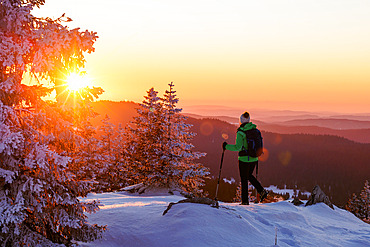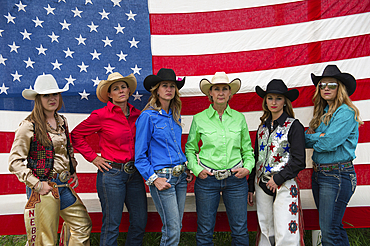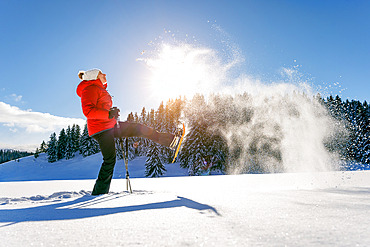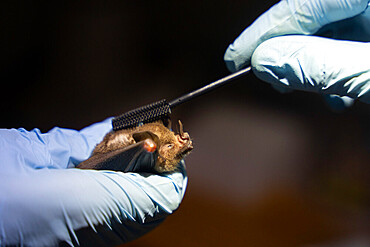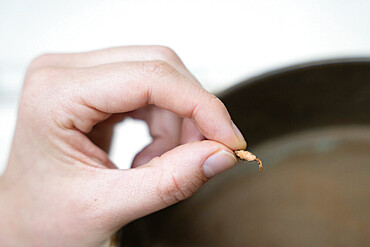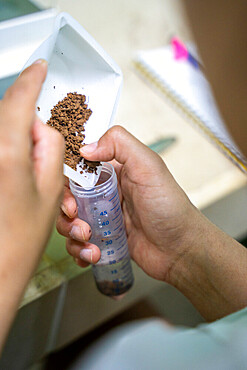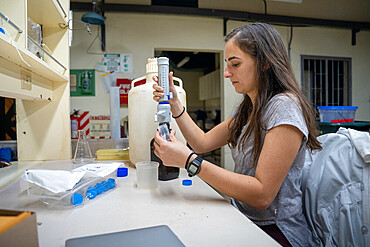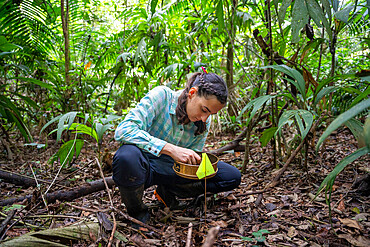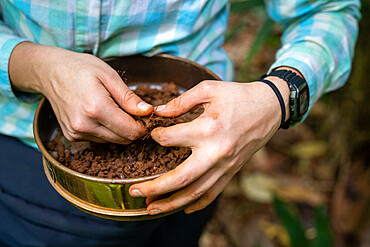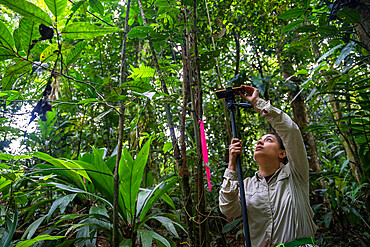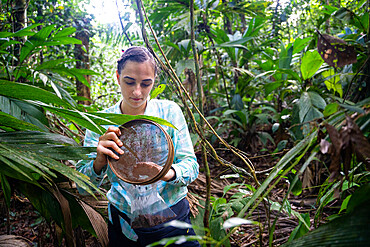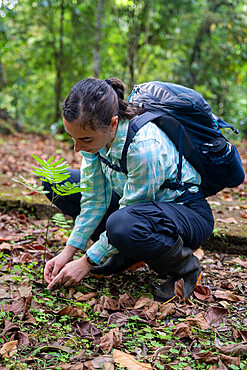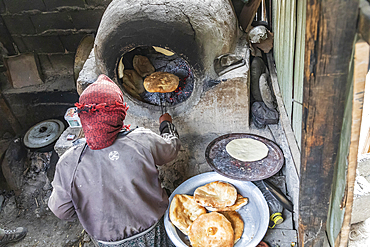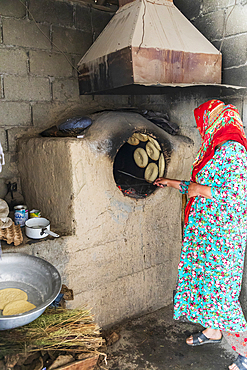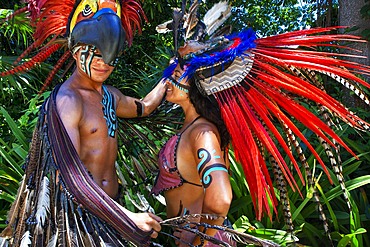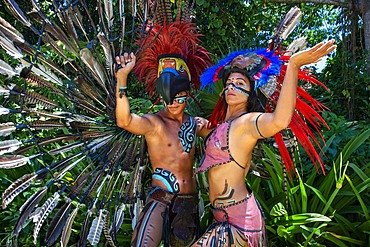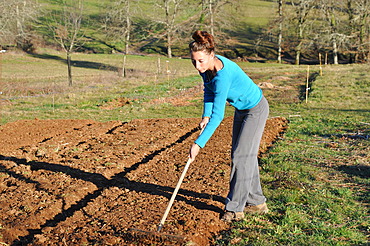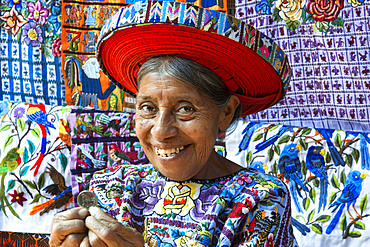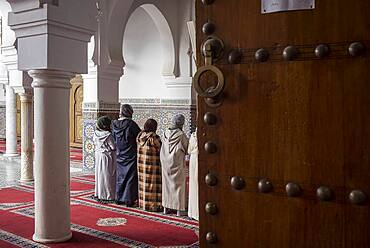Recent searches
Loading...
860-292388 - Landscape of Svalbard in Norway, also known as Spitsbergen. This territory stretches from latitude 75 to 80 degrees to the pack ice a few hundred kilometers from the North Pole. Melting ice, premature global warming. Exploration boat in Madeleine Bay. Young explorer on deck.
860-292265 - Cow-girl on her horse in front of the a giant saguaro cactus. Tanque Verde ranch. Tucson. Arizona. USA.
860-292101 - Snowshoeing at La Dole, Jura sur Leman ski resort, Canton Vaud, Switzerland
1116-52915 - Rodeo queens pose for a portrait in front of an American flag, Burwell, Nebraska, United States of America
1116-52914 - Close up of a rodeo queen's belt buckle in front of an American flag, Burwell, Nebraska, United States of America
1116-52912 - Two rodeo queens stand with their horses, Burwell, Nebraska, United States of America
860-291837 - Repotting a bonsai olive tree in a pot, step by step. Final watering.
860-291836 - Potting a pruned bonsai olive tree in a pot, step by step. Filling with bonsai substrate.
860-291835 - Potting a bonsai olive tree in a pot, step by step. Positioning the tree in the bonsai pot.
860-291834 - Potting a bonsai olive tree in a pot, step by step. Preparing the bed by making a mound in the bowl before planting.
860-291833 - Potting a pruned olive tree in a pot, step by step. Preparation of the planting bed in the bonsai bowl.
860-291831 - Repotting a bonsai olive tree in a pot, step by step. Reducing the volume of the root ball with an old fork.
860-291830 - Repotting a bonsai olive tree in a pot, step by step. Reducing the volume of the root ball with an old fork.
860-291829 - Repotting a bonsai olive tree in a pot, step by step. Removing the potting material.
860-291827 - Potting a pruned olive tree in a pot, step by step. Training pruning.
860-291828 - Potting a pruned olive tree in a pot, step by step. Training pruning.
860-291721 - The Hautes Combes, Snowshoeing, in the background: the Jura Mountains, Jura, France
860-291720 - The Hautes Combes, Snowshoeing, Jura, France
860-291711 - Woman sitting at the belvedere of Chateau-chalon, AOC vineyard, Savagnin grape variety, capital of yellow wine, Jura, France
860-291476 - Female snorkeler above the reef at sunset, S Pass, Mayotte
860-291433 - Fringe-lipped Bat (Trachops cirrhosus) in the hand of a scientist as part of a pollination study, tropical forest at the "La Selva" research station in Puerto Viejo de Sarapiqui, Costa Rica
860-291431 - Researcher unhooking a bat caught in a net as part of a pollination study, rainforest at the "La Selva" research station in Puerto Viejo de Sarapiqui, Costa Rica
860-291430 - Researchers applying a mascara brush to the hairs of a Sowell's short-tailed bat (Carollia sowelli) to test methods to capture pollen that bats may carry as part of a pollination study, rainforest at the "La Selva" research station in Puerto Viejo de Sarapiqui, Costa Rica
860-291428 - Researchers applying a mascara brush to the hairs of a Sowell's short-tailed bat (Carollia sowelli) to test methods to capture pollen that bats may carry as part of a pollination study, rainforest at the "La Selva" research station in Puerto Viejo de Sarapiqui, Costa Rica
860-291426 - Sowell's short-tailed bat (Carollia sowelli) caught as part of a pollination study, rainforest at the "La Selva" research station in Puerto Viejo de Sarapiqui, Costa Rica
860-291425 - Sowell's short-tailed bat (Carollia sowelli) caught as part of a pollination study, rainforest at the "La Selva" research station in Puerto Viejo de Sarapiqui, Costa Rica
860-291423 - Installation of a sign on a hiking trail indicating the presence of nets to capture bats as part of a pollination study, rainforest of the "La Selva" research station in Puerto Viejo de Sarapiqui, Costa Ricardo
860-291421 - 27-year-old female researcher working on nitrogen exchange between bacteria and the roots of legumes showing an example of a nodule of bacteria attached to the roots in the rainforest of the "La Selva" research station in Puerto Viejo de Sarapiqui, Costa Rica
860-291420 - Earth diluted with water in order to extract the PH from the soil as part of a study on nitrogen exchanges between bacteria and the roots of legumes in the tropical forest of the "La Selva" research station in Puerto Viejo from Sarapiqui, Costa Rica
860-291419 - 27-year-old researcher working in a lab on nitrogen exchange between bacteria and the roots of legumes in the rainforest at the "La Selva" research station in Puerto Viejo de Sarapiqui, Costa Rica
860-291415 - 27-year-old researcher working on nitrogen exchange between bacteria and the roots of legumes in the rainforest at the "La Selva" research station in Puerto Viejo de Sarapiqui, Costa Rica
860-291416 - 27-year-old researcher working on nitrogen exchange between bacteria and the roots of legumes in the rainforest at the "La Selva" research station in Puerto Viejo de Sarapiqui, Costa Rica
860-291414 - 29-year-old assistant researcher working on nitrogen exchange between bacteria and the roots of legumes in the rainforest at the "La Selva" research station in Puerto Viejo de Sarapiqui, Costa Rica
860-291409 - 27-year-old researcher working on nitrogen exchange between bacteria and the roots of legumes in the rainforest at the "La Selva" research station in Puerto Viejo de Sarapiqui, Costa Rica
860-291410 - 27-year-old researcher working on nitrogen exchange between bacteria and the roots of legumes in the rainforest at the "La Selva" research station in Puerto Viejo de Sarapiqui, Costa Rica
860-291406 - 27-year-old researcher in front of the Pracaxi legume (Pentaclethra macroloba) at the "La Selva" research station in Puerto Viejo de Sarapiqui, Costa Rica
1366-804 - Khujand, Sughd Province, Tajikistan. August 20, 2021. Woman at the Panjshanbe Bazaar in Khujand. Editorial Use Only
1366-803 - Khujand, Sughd Province, Tajikistan. August 20, 2021. Woman selling sausages at the Panjshanbe Bazaar in Khujand. Editorial Use Only
1366-794 - Khujand, Sughd Province, Tajikistan. August 20, 2021. Vendor at the Panjshanbe Bazaar in Khujand. Editorial Use Only
1366-748 - Panjakent, Sughd Province, Tajikistan. August 18, 2021. Craftsperson weaving at the Historical Museum in Panjakent. Editorial Use Only
1366-751 - Panjakent, Sughd Province, Tajikistan. August 18, 2021. Craftsperson doing traditional needlework at the Historical Museum in Panjakent. Editorial Use Only
1366-716 - Margib, Sughd Province, Tajikistan. August 15, 2021. Baking flat bread in a traditional wood fired oven. Editorial Use Only
1366-710 - Margib, Sughd Province, Tajikistan. August 15, 2021. Baking flat bread in a wood fired oven. Editorial Use Only
1366-706 - Rabot, Gorno-Badakhshan Autonomous Province, Tajikistan. August 14, 2021. A woman in a blue head scarf in rural Tajikistan. Editorial Use Only
1366-705 - Gorno-Badakhshan Autonomous Province, Tajikistan. August 14, 2021. A woman wearing a red head scarf in the mountains of Tajikistan. Editorial Use Only
1366-704 - Kulob, Khatlon Province, Tajikistan. August 13, 2021. Woman being fitted with a head scarf in the market in Kulob. Editorial Use Only
1366-702 - Momandiyon, Khatlon Province, Tajikistan. August 13, 2021. Tajik woman in a red head scarf. Editorial Use Only
1366-701 - Momandiyon, Khatlon Province, Tajikistan. August 13, 2021. Mature Tajik man and woman. Editorial Use Only
1366-698 - Momandiyon, Khatlon Province, Tajikistan. August 13, 2021. Girl wearing a scarf on her face, at a field where pears are being prepared and dried in the sun. Editorial Use Only
1366-696 - Momandiyon, Khatlon Province, Tajikistan. August 13, 2021. Girl slicing pears to be dried in the sun. Editorial Use Only
1366-697 - Momandiyon, Khatlon Province, Tajikistan. August 13, 2021. Women and girls slicing pears to be dried in the sun. Editorial Use Only
1366-694 - Dushanbe, Tajikistan. August 12, 2021. The Mehrgon Market in Dushanbe. Editorial Use Only
1366-662 - Dushanbe, Tajikistan. August 12, 2021. Shoppers at the Mehrgon Market in Dushanbe. Editorial Use Only
1366-780 - Khujand, Sughd Province, Tajikistan. August 20, 2021. Shoppers in the Panjshanbe Bazaar in Khujand. Editorial Use Only
1366-779 - Khujand, Sughd Province, Tajikistan. August 20, 2021. Interior view of the Panjshanbe Bazaar in Khujand. Editorial Use Only
1366-752 - Panjakent, Sughd Province, Tajikistan. August 18, 2021. Craftsperson doing traditional needlework at the Historical Museum in Panjakent. Editorial Use Only
1366-750 - Panjakent, Sughd Province, Tajikistan. August 18, 2021. Craftsperson doing traditional needlework at the Historical Museum in Panjakent. Editorial Use Only
1366-747 - Panjakent, Sughd Province, Tajikistan. August 18, 2021. Craftsperson doing traditional needlework at the Historical Museum in Panjakent. Editorial Use Only
1366-738 - Haft Kul, Sughd Province, Tajikistan. August 17, 2021. A woman with her two children in the mountains of Tajikistan. Editorial Use Only
1366-786 - Khujand, Sughd Province, Tajikistan. August 20, 2021. Fresh peppers for sale Bulk spices at the Panjshanbe Bazaar in Khujand. Editorial Use Only
1350-6608 - Mexican aztec dress gods at Grand Palladium White Sand Resort and Spa in Riviera Maya, Yucatan Peninsula, Quintana Roo, Caribbean Coast, Mexico.
Aztec clothing was generally loose fitting and did not completely cover the body. When the Spanish arrived in Mexico, the people were surprised to see them in their full armour, with only their faces exposed.
Aztec clothes were generally made of cotton (which was imported) or ayate fiber, made from the Maguey Cactus (also called the Century Plant or American Aloe). Women would weave the fibers into clothing, a task girls were taught as young teenagers. Because of their vast trading network, the Aztecs were able to make use of a beautiful array of dyes, creating the brilliant
1350-6595 - Mexican aztec dress gods at Grand Palladium White Sand Resort and Spa in Riviera Maya, Yucatan Peninsula, Quintana Roo, Caribbean Coast, Mexico.
Aztec clothing was generally loose fitting and did not completely cover the body. When the Spanish arrived in Mexico, the people were surprised to see them in their full armour, with only their faces exposed.
Aztec clothes were generally made of cotton (which was imported) or ayate fiber, made from the Maguey Cactus (also called the Century Plant or American Aloe). Women would weave the fibers into clothing, a task girls were taught as young teenagers. Because of their vast trading network, the Aztecs were able to make use of a beautiful array of dyes, creating the brilliant
1179-5916 - Carefree woman with straw hat sunbathing lying on a idyllic beach, Kefalonia, Ionian Islands, Greek Islands, Greece, Europe
1179-5913 - Woman with straw hat contemplating the sea lying on a beach in summer, Kefalonia, Ionian Islands, Greek Islands, Greece, Europe
860-290492 - Covering seeds with a rake, Permaculture sowing
860-290497 - Green manure sowing, Permaculture sowing
860-290495 - Covering seeds with a rake, Permaculture sowing
860-290530 - Planting a conifer hedge. Planting an Italian cypress 'Stricta'.
860-290525 - Creating a passage in a garden. Step 2: Laying the borders.
860-290527 - Creation of a passage in a garden. Step 3: lining with textile (mulch cloth).
83-13291 - Man machine threshing rice by limestone rocks in karst area, Rammang-Rammang, Maros, South Sulawesi, Indonesia, Southeast Asia, Asia
1184-6268 - Traditional dressed Khakassian woman, Abakan, Republic of Khakassia, Russia, Eurasia
1184-6267 - Traditional dressed Khakassian woman, Abakan, Republic of Khakassia, Russia, Eurasia
848-2247 - South Bank at night, London, England, United Kingdom, Europe
1352-49 - A walker on the path in Darlands Nature Reserve, Borough of Barnet, London, England, United Kingdom, Europe
809-8336 - Indigenous woman in a quinoa field in San Jose de Tanquis, Ecuador, South America
809-8248 - Woman practising yoga pose and meditation at sunset as concept for silence and relaxation, United Arab Emirates, Middle East
809-8253 - Woman practising yoga pose and meditation at sunset as concept for silence and relaxation, United Arab Emirates, Middle East
809-8286 - Faithful lighting a candle in Saint Teaodor Tiron (Ciuflea) Cathedral and Monastery, Chisinau, Moldova, Europe
809-8259 - Silhouette of faithful religious woman praying with Christian cross at sunset, United Arab Emirates, Middle East
809-8256 - Silhouette of faithful woman praying with rosary beads at sunset as concept for religion, faith, prayer and spirituality, Dubai, United Arab Emirates, Middle East
809-8257 - Silhouette of faithful woman praying with Christian cross at sunset as concept for religion, faith, prayer and spirituality, Dubai, United Arab Emirates, Middle East
809-8258 - Sunset meditation in the desert at sunset, as concept for religion, faith, prayer and spirituality, Dubai, United Arab Emirates, Middle East
809-8252 - Woman practising yoga meditation on beach at sunset as concept for silence and relaxation, United Arab Emirates, Middle East
809-8254 - Silhouette of faithful woman praying with Christian cross at sunset as concept for religion, faith, prayer and spirituality, Dubai, United Arab Emirates, Middle East
809-8250 - Woman practising yoga meditation by the sea before sunset as concept for silence and relaxation, United Arab Emirates, Middle East
809-8255 - Silhouette of faithful woman praying with rosary beads at sunset as concept for religion, faith, prayer and spirituality, Dubai, United Arab Emirates, Middle East
809-8249 - Woman practising yoga pose and meditation at sunset as concept for silence and relaxation, United Arab Emirates, Middle East
809-8247 - Woman practising yoga meditation by the sea before sunset as concept for silence and relaxation, United Arab Emirates, Middle East
809-8251 - Woman practising yoga meditation on beach at sunset as concept for silence and relaxation, United Arab Emirates, Middle East
1218-1500 - Woman enjoying the beautiful scenery in Mallorca, Balearic Islands, Spain, Mediterranean, Europe
1218-1499 - Woman enjoying the beautiful scenery in Mallorca, Balearic Islands, Spain, Mediterranean, Europe
1350-3790 - Concepcion Ramirez is the woman Tzutujil appears on coins of 25 cents of Guatemala. Woman in traditional dress as profiled on 25 cent coin Santiago Atitlan Guatemala Central America.
1179-5381 - Charming woman with dress walking to the old lighthouse at sunset, Chania, Greek Islands, Greece, Europe
1348-2428 - Pause Diabolo, a risk reduction center for drug users, in Lyon, France. A 19-year old woman living on the street comes to Pause Diabolo on the women only day.
1350-1236 - Women praying, Courtyard, Zaouia (tomb) of Moulay Idriss II, medina, Fez. Morocco


